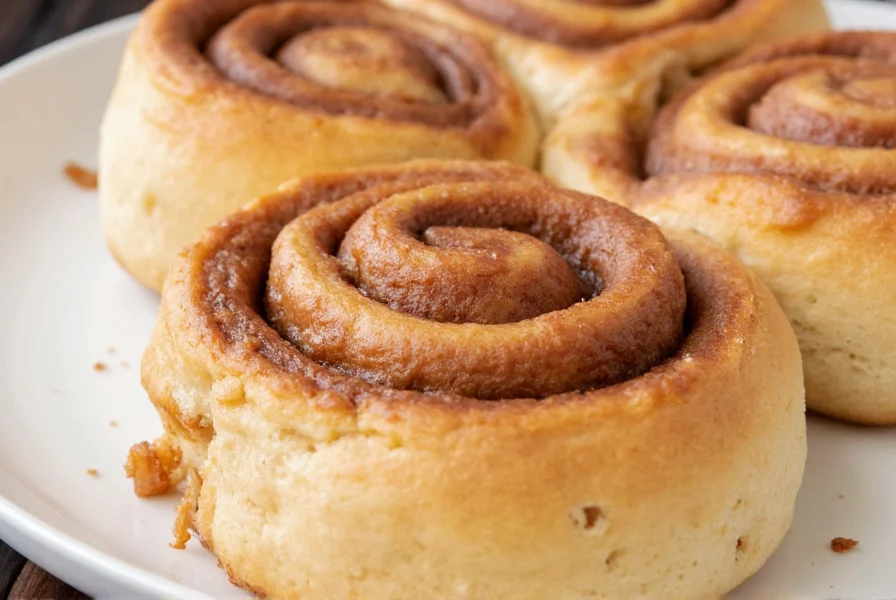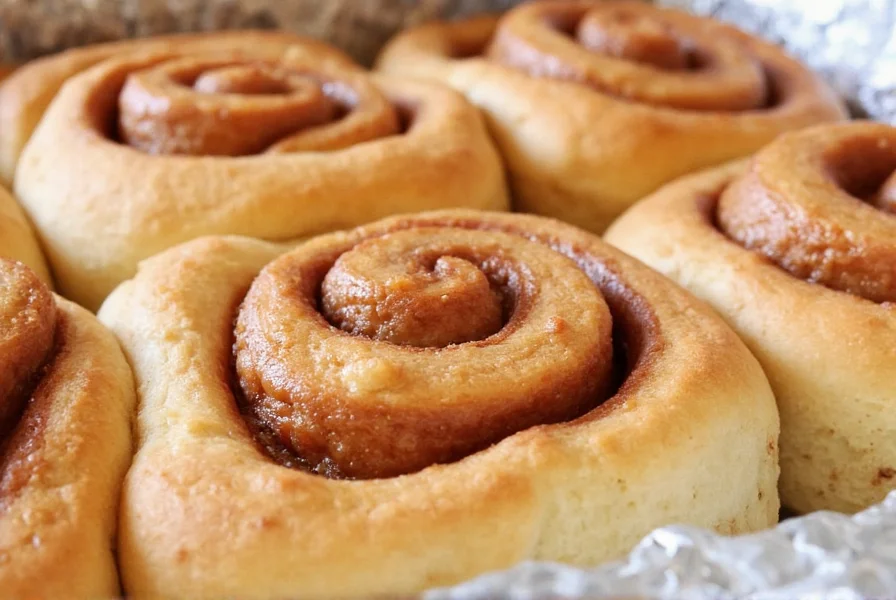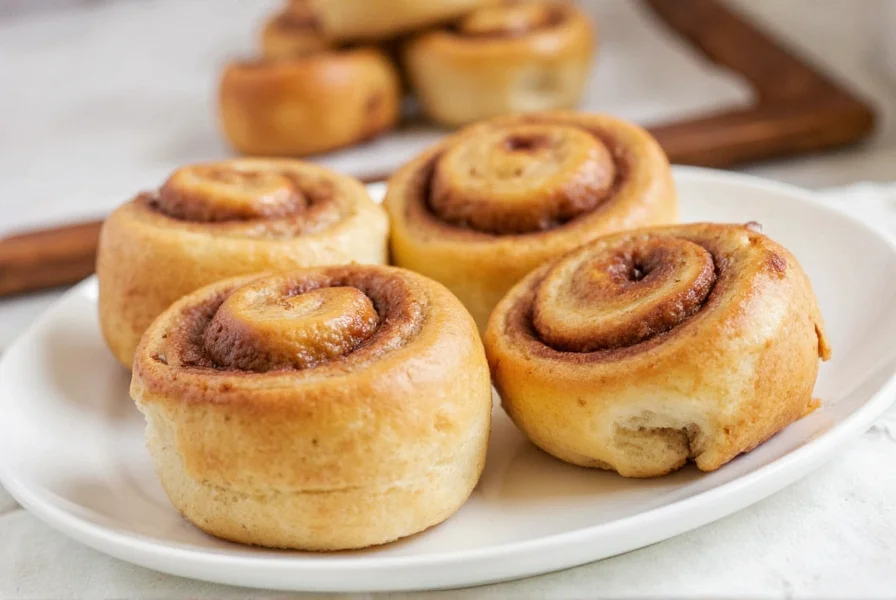There's nothing quite like pulling apart a warm cinnamon roll to reveal that perfectly sticky, molten center. But achieving that ideal gooey texture consistently requires understanding the science behind it. Many home bakers struggle with rolls that turn out dry, crumbly, or overly firm - missing that coveted pull-apart quality that makes cinnamon rolls so irresistible.
The Science Behind Gooey Cinnamon Rolls
What transforms ordinary baked goods into that magical gooey texture? It's all about sugar behavior and moisture retention. When brown sugar, butter, and cinnamon combine in the filling, they create a syrupy mixture during baking. The molasses in brown sugar lowers the melting point of the sugar mixture, keeping it fluid longer than white sugar would.
Professional bakers know that the ideal internal temperature for perfect gooey cinnamon rolls is between 190-200°F (88-93°C). Going just 5-10 degrees beyond this range causes the sugars to crystallize and the moisture to evaporate, resulting in that dreaded dry texture.
| Texture Issue | Temperature Range | Result |
|---|---|---|
| Underbaked | Below 185°F (85°C) | Dense center, raw dough texture |
| Perfectly gooey | 190-200°F (88-93°C) | Ideal sticky texture, fully cooked |
| Dry and firm | Above 205°F (96°C) | Sugars crystallize, moisture evaporates |
Essential Ingredients for Maximum Gooeyness
The foundation of homemade gooey cinnamon rolls technique starts with ingredient selection:
- Brown sugar - Use dark brown sugar for its higher molasses content, which creates a more fluid filling
- Unsalted butter - Must be at room temperature for proper incorporation
- Bread flour - Provides better structure to hold the gooey filling without collapsing
- Heavy cream in the glaze - Creates a richer, slower-setting icing that complements the gooey interior
Avoid substituting ingredients haphazardly when attempting to make cinnamon rolls stay gooey. Each component plays a specific role in the final texture.

Step-by-Step Method for Perfect Gooey Cinnamon Rolls
Follow these critical steps to ensure your perfect gooey cinnamon rolls recipe succeeds every time:
- Dough preparation - Knead until smooth and elastic (about 8 minutes in stand mixer). The gluten development is crucial for structure.
- Filling consistency - Mix 1 cup dark brown sugar, 1/2 cup softened butter, and 2 tablespoons cinnamon until spreadable but not runny.
- Rolling technique - Roll dough tightly but gently to avoid compressing the layers.
- Baking temperature - Preheat oven to 350°F (175°C) but use an oven thermometer to verify accuracy.
- Critical timing - Bake for 22-25 minutes until golden but still soft to touch. Insert thermometer in center - remove at 195°F.
- Cooling protocol - Let rolls rest in pan for 15 minutes before adding glaze. This allows sugars to set slightly while maintaining gooeyness.
Common Mistakes That Ruin Gooey Texture
Even experienced bakers make these errors when trying to achieve cinnamon roll baking temperature for gooey texture:
- Overbaking by just 3-5 minutes - The difference between gooey and dry happens quickly
- Using all-purpose flour instead of bread flour - Results in weaker structure that can't hold the filling
- Adding too much flour during rolling - Dries out the dough and prevents proper layering
- Applying glaze immediately - Causes it to soak in rather than creating that perfect topping layer
- Cutting rolls too thick - Leads to uneven baking and potentially raw centers
Maintaining Gooey Texture After Baking
Proper storage is essential for how to make cinnamon rolls stay gooey beyond the initial bake:
- Store in airtight container at room temperature for up to 2 days
- Reheat individual rolls by microwaving for 15-20 seconds with a damp paper towel
- For longer storage, freeze before glazing, then thaw and reheat when needed
- Avoid refrigeration, which accelerates staling and dries out the rolls

Variations Without Sacrificing Gooeyness
You can customize your best ingredients for gooey cinnamon rolls while maintaining that essential texture:
- Add 1/4 cup crushed pecans to filling for crunch without drying
- Substitute 2 tablespoons of filling butter with cream cheese for tangy richness
- Incorporate 1 tablespoon of corn syrup into filling to enhance gooey consistency
- Drizzle caramel sauce over finished rolls for extra stickiness
Remember that any liquid additions should be balanced by slightly reducing other wet ingredients to maintain proper dough consistency.
Troubleshooting Gooey Texture Issues
When your cinnamon roll texture troubleshooting efforts fail, consider these solutions:
- Dry rolls - Next time, reduce baking time by 2-3 minutes and verify oven temperature
- Soggy bottom - Place baking pan on a preheated baking sheet to ensure even bottom cooking
- Filling leaking out - Chill rolled log for 20 minutes before slicing for cleaner cuts
- Uneven gooeyness - Rotate pan halfway through baking for even heat distribution
Frequently Asked Questions
Why are my cinnamon rolls not gooey?
Cinnamon rolls become dry when overbaked (above 205°F internal temperature), when using all-purpose flour instead of bread flour, or when insufficient brown sugar is used in the filling. The molasses in dark brown sugar is essential for creating the gooey texture as it lowers the melting point of the sugar mixture.
How do you keep cinnamon rolls gooey after baking?
To maintain gooey texture, store cinnamon rolls in an airtight container at room temperature for up to 2 days. When reheating, use a microwave for 15-20 seconds with a damp paper towel to restore moisture. Avoid refrigeration, which accelerates staling and dries out the rolls. Proper cooling for 15 minutes before glazing also helps set the ideal texture.
What's the ideal internal temperature for gooey cinnamon rolls?
The ideal internal temperature for perfectly gooey cinnamon rolls is between 190-200°F (88-93°C). At this temperature range, the rolls are fully cooked but the sugar filling remains fluid enough to create that signature sticky, molten center. Using a digital thermometer is the most reliable way to achieve consistent results.
Can I make gooey cinnamon rolls with all-purpose flour?
While possible, all-purpose flour makes it more challenging to achieve perfect gooeyness. Bread flour's higher protein content creates better structure to hold the gooey filling without collapsing. If using all-purpose flour, reduce liquid by 1-2 tablespoons and be extra careful not to overproof the dough, as it has less structural integrity.
How long should cinnamon rolls cool before glazing for maximum gooeyness?
Cinnamon rolls should cool in the pan for 15 minutes before applying glaze. This allows the internal temperature to drop slightly from the ideal 195°F baking temperature to around 180°F, which helps the sugars set just enough to maintain structure while preserving that desirable gooey texture. Applying glaze too soon causes it to soak in completely, while waiting too long makes the rolls dry.











 浙公网安备
33010002000092号
浙公网安备
33010002000092号 浙B2-20120091-4
浙B2-20120091-4